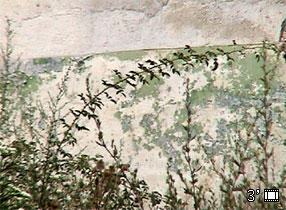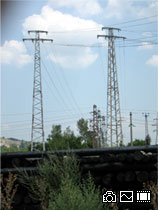From the style and iconography it was almost certainly erected during the communist era and refers to the later, communist-inspired, uprising.
Then we see a farm building complex which is in the process of collapse. We pull over and M finds out that it was part of one of the collective farms and that they have fallen into disuse because the title to the buildings is still obscure. After that we visit a substation. A number of other things catch my attention as we drive along the road. Almost everywhere, especially near villages or crossroads, there are people selling fruit and vegetables by the roadside. Right now it is the season for tomatoes, peaches, watermelons and melons. Every little stall has a scale for the produce and I’ve noticed that they look as if they embody the history of the country over the last 150 years.
 |
|
 |
So I have started to make a collection of photographs of them and sometimes their owners, with their permission. I don’t know what M is actually telling people, but they are friendly, if occasionally puzzled. The first grey-haired farmer’s wife in a blue coat and lavender flip-flops tells us she inherited her scales from her grandmother who got them from her grandmother. That must take us back to about the time of Bulgaria becoming independent of the Ottoman Empire in the 1870s, a little before my own grandparents were born. |
|
Others are completely up to date with a digital display. One metal monster carries the name ‘Metinel’ and is decorated with rockets though it looks more like it could serve as an emergency substitute for the central section of the Tower Bridge (should that prove necessary) than as a space rocket gantry. M tells me it’s from Turkey. The collection is growing so fast I invent a fictitious academic title for it: A Measure of Change: A Visual History of Weighing Devices in Central and Southern Bulgaria.
|